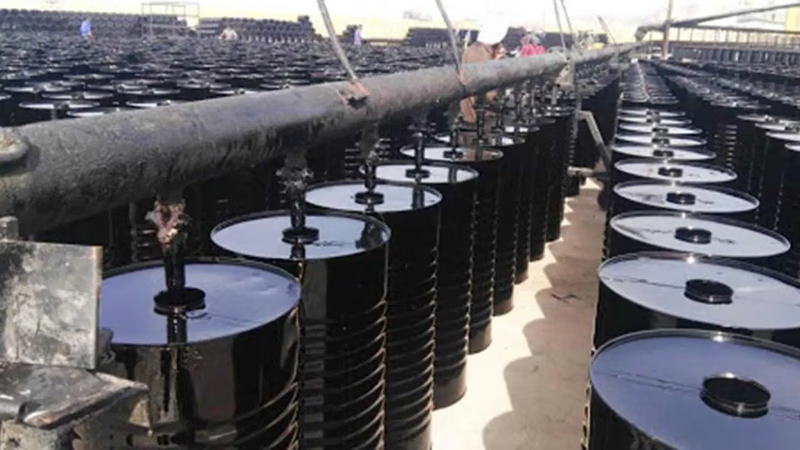
Various types of bitumen used in construction and trade.
Penetration grade bitumen is classified based on its penetration depth, which refers to the hardness and consistency of the bitumen at a specific temperature. The most commonly used penetration grades are PG 64-22, PG 70-10, and PG 76-10. These grades are often used in road construction and asphalt paving. Polymer-modified bitumen is created by blending regular bitumen with polymers such as styrene-butadiene-styrene (SBS) or ethylene-vinyl acetate (EVA). The addition of polymers enhances the physical properties of bitumen, making it more resistant to deformation, cracking, and aging. PMB is commonly used in high-stress applications, such as heavy traffic roads and airports.
Bitumen extracted from oil or special minerals is called pure bitumen, which is classified according to its formation. Pure bitumen are also subjected to other industrial processes in order to find the desired properties for different purposes, and we classify different types of bitumen according to the quality of their material in the following order:
- Petroleum bitumen
Petroleum bitumen are solid and semi-solid that are obtained directly from the distillation of crude oil or by other additional operations such as blowing air. Residual or heavy oil bitumen is the distillation of crude oil. The amount of crude oil bitumen varies from zero to more than half of it. In addition, bitumen obtained from different sources can have many differences. Therefore, bitumen refineries must carefully choose their crude oil to ensure the quality of bitumen. - Natural bitumen
Bitumen is a natural hydrocarbon resin that has been rediscovered in modern history on the Bonita River in northeastern Utah. This natural asphalt has hardened like a crude oil asphalt. \"Natural bitumen, like natural asphalt, is soluble in aliphatic and aromatic solvents.\" Due to the high compatibility of this product, it is usually used to harden dilute petroleum derivatives. - Tar bitumen
Types of bitumen Chemically, there are different classifications for bitumen, two of the most common of which are based on the natural or petroleum nature of bitumen and the most common case is based on the type of bitumen supply source, oil or coal or wood.
Cutback bitumen is a mixture of bitumen and a volatile solvent, such as kerosene or gasoline. The solvent reduces the viscosity of bitumen, making it easier to work with at lower temperatures. Cutback bitumen is often used for spraying applications, surface dressing, and tack coats in road construction. Emulsion bitumen is a dispersion of bitumen in water, stabilized with an emulsifying agent. It is used in applications where the mixing and handling of hot bitumen are not feasible. Emulsion bitumen is commonly used in surface treatments, chip seals, and cold mix asphalt.
Oxidized bitumen is produced by blowing air through hot bitumen, which increases its viscosity and stiffness. This type of bitumen is used in industrial applications, such as roofing, waterproofing, and pipe coating. It provides excellent durability and resistance to weathering. Hard bitumen, also known as road tar or mastic asphalt, has a high melting point and is very stiff at normal temperatures. It is used in specialized applications that require high resistance to deformation, such as bridge expansion joints, roofing, and anti-corrosion coatings.


